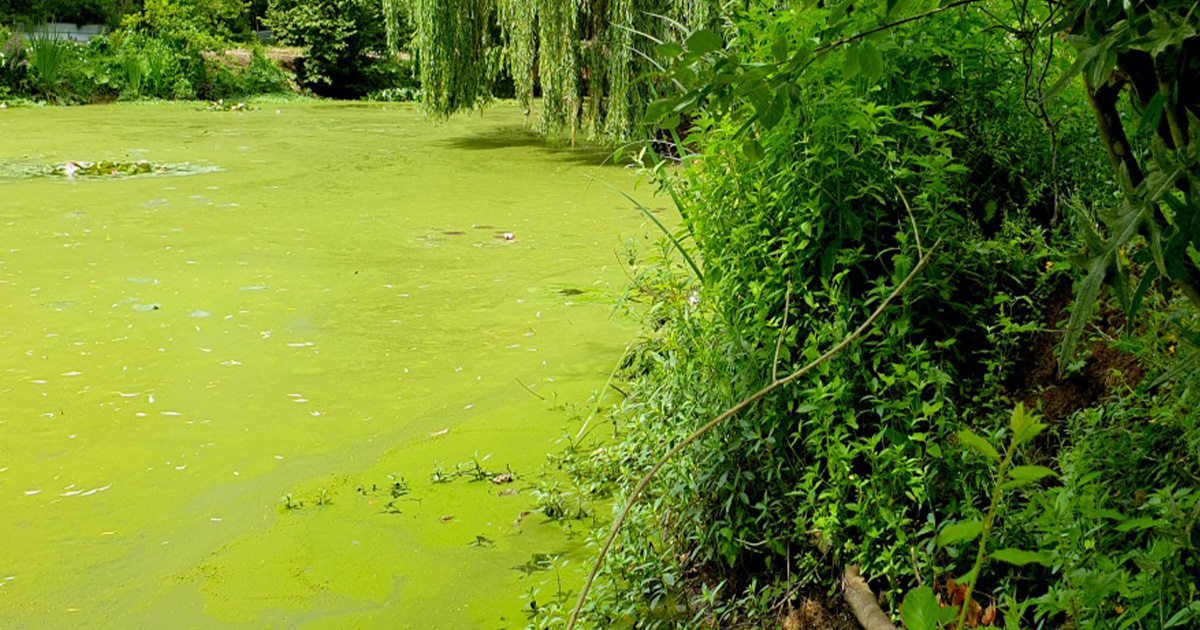A team at Nottingham Trent University and Loughborough University has revealed the physical mechanism behind the geometric patterns formed of ‘cyanobacteria’, one of the oldest and most abundant forms of life on Earth, and which has played a pivotal role in the evolution of our planet.
Ancient cyanobacteria were the first life form to develop photosynthesis and are responsible for injecting oxygen into the Earth’s environment, thereby laying the foundation for the emergence of the complex life forms we are familiar with today.
Today’s cyanobacteria continue to play a key role in maintaining the composition of today’s atmosphere and oceans. To help it survive, many species also grow into long chains of cells that crawl across surfaces and weave together into large networks of closely-bundled filaments over hours or days.
However, until now, the origin of these ‘reticulate’ or web-like patterns has puzzled scientists.
Using advanced microscopy techniques, simulations and theoretical models, the researchers have revealed how interactions between the thread-like filaments cause them to bundle together and build structures.
They found that when cyanobacteria are present at a high enough density, they begin to organize into their reticulate pattern, as a result of only a few simple rules.
As the bacteria move, they bump into each other. In most instances, filaments pass over or under each other, but occasionally one deflects and turns to travel alongside another. These two filaments follow each other for a while, before one splits away.
These interactions lead to the formation of bundles of aligned filaments which organize denser colonies into sprawling networks.
 A web-like pattern formed by cyanobacteria (Image credit: Nottingham Trent University)
A web-like pattern formed by cyanobacteria (Image credit: Nottingham Trent University)
The researchers have developed a model that successfully predicts the typical density and scale of the emergent patterns, including the movement and shape fluctuations of the filaments.
The team says the findings pave the way to inspiring future investigation of how different types of bacteria self-organize to form structures.
This could improve our understanding of how bacterial biofilms—collections of bacteria that have attached to a surface and each other—are formed. This knowledge is critical given their central role in various processes, such as human infections, environmental degradation, and bioengineering.
Dr. Marco Mazza, Assistant Professor in Applied Mathematics at Loughborough University, said: “We have demonstrated that the emergent patterns of cyanobacteria colonies can be understood as the collective result of independently moving cells with simple interactions.
“When carefully applied, modern tools of nonequilibrium statistical mechanics can provide powerful predictions even in living systems”.
Dr. Lucas Goehring, Professor of Physics in Nottingham Trent University’s School of Science and Technology, said: “Cyanobacteria are among the Earth’s most abundant and ancient organisms and created photosynthesis. They are also perhaps the earliest organism to experiment with multicellularity.
“This hugely important, but unassuming, microorganism is involved in processes of global importance, such as the balance of oxygen and nitrogen. Despite its importance to the development of complex life, however, no mechanism has until now been identified to explain their collective behavior.”
The research, for which Ph.D. students Mixon Faluweki and Jan Cammann are co-lead authors, is published in the journal Physical Review Letters.



